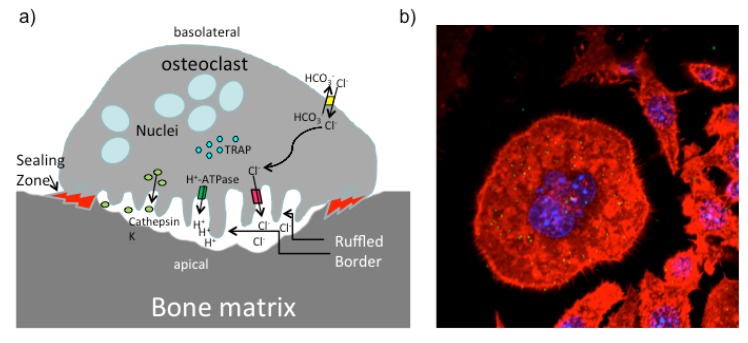Figure 3.
Illustration of a functional active osteoclast. (a) Mature osteoclasts are large multi-nucleated cells that cover a big area on the bone to degrade the bone matrix. The apical membrane faces the bone and the sealing zone generates an isolated region. A ring of aggregated F-actin assures the strong attachment of the osteoclast to its substrate. The resorptive area is acidified by secretion of HCL to demineralize the bone matrix. Organic components are degraded by Cathepsin K. Osteoclasts express tartrate-resistant acid phosphatase (TRAP), which is commonly used as a marker for osteoclasts. (b) Osteoclast derived from PMT-treated RAW 264.7 macrophages. RAW 264.7 cells were stimulated with PMT for 4 days and osteoclasts were identified by staining for multi-nucleated and TRAP-positive cells (blue: nuclei (DAPI); green: TRAP enzyme (ELF97); red: cytoskeleton (Phalloidin-TRITC)).

